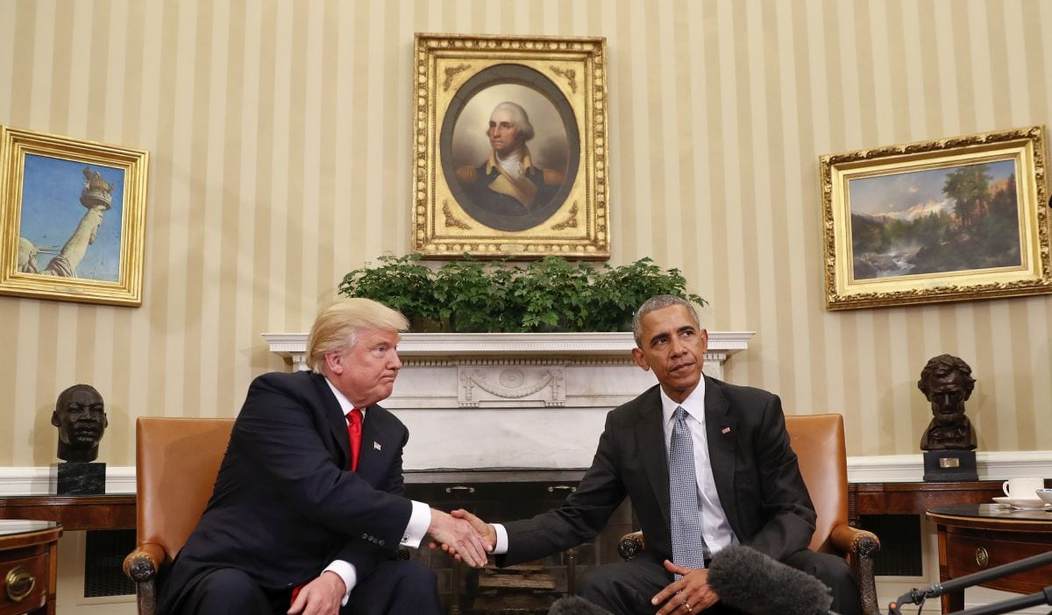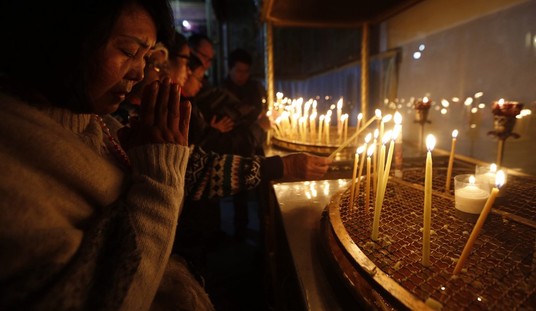This morning we found out that President Trump told “Axios on HBO” that he intends to do away with birthright citizenship. Without a doubt, birthright citizenship is a major problem, and it certainly should be done away with. So far, most conservative commentators seem to be echoing this sentiment as well. Andrew McCarthy explained at National Review that even though birthright citizenship is not required by the 14th Amendment, it is a policy that must be addressed legislatively, not via executive order. Senator Lindsey Graham, while acknowledging the problem of birthright citizenship and commending Trump for being “willing to take on this absurd policy,” has announced plans to introduce legislation to end it.
So, why does Trump think he can (or should) end birthright citizenship via executive order? I think the answer is simple: Barack Obama. For eight years, Obama saw the Constitution as something that got in the way of his agenda, and he repeatedly ignored it. Obama infamously claimed “We’re not just going to be waiting for legislation in order to make sure that we’re providing Americans the kind of help they need. I’ve got a pen and I’ve got a phone” and “We can’t wait for Congress to do its job, so where they won’t act, I will.” For the most part, he got away with it. And Democrats, rather than say, “Oh, no you can’t,” went along with it without objection. Their agenda was too important, and the risks of creating an imperial presidency were inconsequential to them.
And that’s what really gets me about this whole situation. Republicans are already working on a legislative answer to the problem of birthright citizenship, but for eight years, Democrats were accessories to Obama’s unconstitutional abuses of power. Here are five examples.
5. Repeated executive orders to “fix” Obamacare
After Democrats passed Obamacare, problems with its implementation kept piling up. Americans found themselves unhappy when the realities didn’t fulfill the promises Obama made, and polls showed that Democrats would pay a heavy price at the ballot box. So, Obama unilaterally made many changes to Obamacare or delayed implementation of various parts until after crucial elections. For example, in 2014 polling suggested an impending electoral disaster for the Democrats because of Obamacare, so Obama infamously delayed the employer mandate for medium-sized businesses until after the elections. Experts on both sides of the aisle believed Obama was exceeding his authority in doing so.
4. Unconstitutional recess appointments
When Democrats took back Congress in 2006, Senate Democrats, led by Harry Reid, held “pro forma” sessions of the Senate in order to prevent President George W. Bush from making any recess appointments. In 2012, Obama made some controversial nominations to the National Labor Relations Board (NLRB) and confirmation by the Senate was unlikely. So he bypassed their constitutional role and declared his nominees appointed via recess appointment when the Senate was not in recess, but in a “pro forma” session. That Democrats had previously used “pro forma” sessions to prevent recess appointments under Bush was of no consequence. Ultimately, the U.S. Supreme Court agreed the appointments were made illegally. Even Justice Elena Kagan, an Obama nominee, found herself questioning Obama’s abuse of power. “It really is the Senate’s job to determine whether they’re in recess or whether they’re not,” she wrote.
3. Cap-and-trade via the EPA
Cap-and-trade was an environmental policy high up on Obama’s presidential to-do list. The Waxman-Markey cap-and-trade bill, also known as the American Clean Energy and Security Act of 2009, failed to pass Congress, but as has been made clear already, Obama wasn’t one to let checks and balances get in his way. In 2014, Obama announced plans to implement cap-and-trade via executive action. When his plans were announced in May 2014, the New York Times reported matter-of-factly:
President Obama will use his executive authority to cut carbon emissions from the nation’s coal-fired power plants by up to 20 percent, according to people familiar with his plans, which will spur the creation of a state cap-and-trade program forcing industry to pay for the carbon pollution it creates.
Mr. Obama will unveil his plans in a new regulation, written by the Environmental Protection Agency, at the White House on Monday. It would be the strongest action ever taken by an American president to tackle climate change and could become one of the defining elements of Mr. Obama’s legacy.
Not once did the article challenge Obama’s authority to do so, except to point out it was Republicans making said charge. Obama’s executive action became known as the Clean Power Plan, and was finalized in 2015. It was, however, ultimately repealed by the Trump administration in 2017.
2. Treaties without Senate ratification
The United States Constitution is very clear on how treaties are ratified. According to Article II, Section 2, Clause 2, the president “shall have Power, by and with the Advice and Consent of the Senate, to make Treaties, provided two-thirds of the Senators present concur.” It does not say the president can unilaterally ratify treaties he knows won’t get ratified by the U.S. Senate… but that’s how Obama apparently read it, because, on two consequential treaties, Obama didn’t even bother attempting to seek Senate ratification: the Iran nuclear deal and the Paris climate treaty. Both had a zero percent chance of ratification, but Obama was trying to create a legacy for himself and chose to ignore the Constitution and signed both anyway. Of course, President Trump ultimately pulled out of both.
1. Executive amnesty
That’s right, perhaps the most notorious executive actions by Barack Obama involved immigration policy. In 2012, after the DREAM Act failed to make it through Congress, Obama signed an executive order creating the Deferred Action for Childhood Arrivals (DACA) program instead. DACA allowed illegal immigrants who came to the United States as minors to stay in the United States via renewable two-year periods of amnesty, protecting them from deportation. This was anything but constitutional. The executive branch enforces the immigration laws, but it cannot create immigration law; that is the job of Congress. To Obama, it was “the right thing to do,” the Constitution be damned.
After the 2014 elections, Obama doubled down on his illegal executive amnesty by another executive order, this one called Deferred Action for Parents of Americans (DAPA) to cover the parents of children given amnesty under DACA. Together, 11 million illegal immigrants would have been protected from deportation because of these two unconstitutional executive orders. DAPA was effectively ruled unconstitutional by the Supreme Court in 2016. Trump has repealed DACA, but its fate still rests in the courts.
_____
Matt Margolis is the author of The Scandalous Presidency of Barack Obama and the bestselling The Worst President in History: The Legacy of Barack Obama. His new book, Trumping Obama: How President Trump Saved Us From Barack Obama’s Legacy, will be published in 2019. You can follow Matt on Twitter @MattMargolis










Join the conversation as a VIP Member